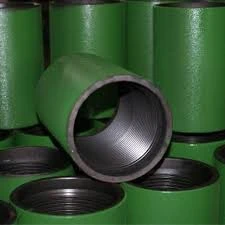- Afrikaans
- Albanian
- Amharic
- Arabic
- Armenian
- Azerbaijani
- Basque
- Belarusian
- Bengali
- Bosnian
- Bulgarian
- Catalan
- Cebuano
- Corsican
- Croatian
- Czech
- Danish
- Dutch
- English
- Esperanto
- Estonian
- Finnish
- French
- Frisian
- Galician
- Georgian
- German
- Greek
- Gujarati
- Haitian Creole
- hausa
- hawaiian
- Hebrew
- Hindi
- Miao
- Hungarian
- Icelandic
- igbo
- Indonesian
- irish
- Italian
- Japanese
- Javanese
- Kannada
- kazakh
- Khmer
- Rwandese
- Korean
- Kurdish
- Kyrgyz
- Lao
- Latin
- Latvian
- Lithuanian
- Luxembourgish
- Macedonian
- Malgashi
- Malay
- Malayalam
- Maltese
- Maori
- Marathi
- Mongolian
- Myanmar
- Nepali
- Norwegian
- Norwegian
- Occitan
- Pashto
- Persian
- Polish
- Portuguese
- Punjabi
- Romanian
- Russian
- Samoan
- Scottish Gaelic
- Serbian
- Sesotho
- Shona
- Sindhi
- Sinhala
- Slovak
- Slovenian
- Somali
- Spanish
- Sundanese
- Swahili
- Swedish
- Tagalog
- Tajik
- Tamil
- Tatar
- Telugu
- Thai
- Turkish
- Turkmen
- Ukrainian
- Urdu
- Uighur
- Uzbek
- Vietnamese
- Welsh
- Bantu
- Yiddish
- Yoruba
- Zulu
Understanding the Function and Design of Casing Pup Joints in Oil and Gas Operations
The Importance of Casing Pup Joints in Oil and Gas Operations
In the oil and gas industry, effective well construction and maintenance are critical to ensuring safety, efficiency, and productivity. Among the various components used in drilling and completion processes, casing pup joints play a significant role in enhancing the functionality and integrity of well systems. This article delves into the essential nature of casing pup joints, their applications, and the technological advancements shaping their use.
Casing pup joints are short lengths of casing that can be connected to the main casing string. They typically measure between one and ten feet, filling the gap when a full joint of casing is not required. The primary purpose of these components is to facilitate the proper alignment and positioning of the casing string in the wellbore. Their adjustable length allows operators to make fine-tuning adjustments during drilling or completion operations, providing flexibility that can be crucial in challenging formations.
One of the key advantages of using casing pup joints is the enhanced capability for preventing well control issues. In situations where the wellbore experiences variations in pressure or unexpected geological changes, pup joints enable more precise casing depth adjustments. This adaptability can help mitigate risks associated with hole collapse or fluid influx, crucial factors in maintaining well integrity.
Furthermore, casing pup joints significantly contribute to the protection of sensitive wellbore environments
. They help maintain a reliable barrier between production zones and potential contaminants, ensuring that production integrity is not compromised. This capability is especially vital in offshore operations, where environmental regulations are stringent, and the consequences of a well failure can be severe.casing pup joint

The manufacturing of casing pup joints has seen notable advancements in recent years, with improved materials and engineering techniques enhancing their durability and performance. Modern pup joints are often made from high-strength steel, which withstands the rigors of high-pressure environments while maintaining elasticity. In addition, technological innovations, such as automated threading and seamless manufacturing processes, have increased the reliability and precision of these components, ensuring that they meet industry standards.
In addition to their practical applications, casing pup joints also play a crucial role in reducing overall operational costs. By allowing for more efficient casing design and minimizing the need for additional equipment, these components help streamline drilling and completion operations. Operators can achieve greater efficiency and flexibility, translating into lower costs and enhanced project timelines.
Moreover, the industry has begun to adopt advanced monitoring technologies, enabling real-time data collection and analysis during drilling. Such technologies help operators assess the performance of casing pup joints and optimize their deployment, leading to improved safety and operational efficiency.
In conclusion, casing pup joints are a vital component of the oil and gas industry, providing flexibility, safety, and cost-effectiveness in well construction and maintenance. As technology continues to evolve, the capabilities and applications of these essential tools are expected to expand, further solidifying their importance in the industry. Their role in optimizing well performance highlights the critical balance of innovation and practicality that drives operational success in the challenging environments of oil and gas extraction.
-
Tubing Pup Joints: Essential Components for Oil and Gas OperationsNewsJul.10,2025
-
Pup Joints: Essential Components for Reliable Drilling OperationsNewsJul.10,2025
-
Pipe Couplings: Connecting Your World EfficientlyNewsJul.10,2025
-
Mastering Oilfield Operations with Quality Tubing and CasingNewsJul.10,2025
-
High-Quality Casing Couplings for Every NeedNewsJul.10,2025
-
Boost Your Drilling Efficiency with Premium Crossover Tools & Seating NipplesNewsJul.10,2025







